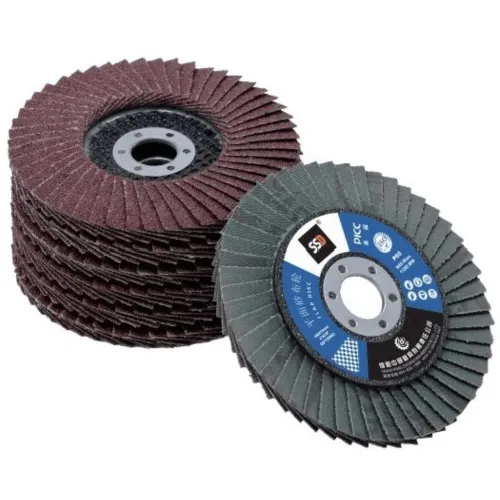Understanding the Basics of Fiberglass Trays
Composition and Manufacturing Process
Fiberglass trays are primarily crafted using glass fibers and resin, creating a product known for its remarkable strength and durability. This composition allows the trays to withstand different environmental elements without degradation, making them highly reliable in various settings.
The manufacturing process typically involves techniques such as pultrusion or hand lay-up, which are designed to optimize the strength-to-weight ratio of the final product. Pultrusion involves pulling fibers through a resin bath and into heated molds, while hand lay-up requires manual placement of fibers and resin within molds.
One of the key advantages of fiberglass trays is their customization potential, allowing them to be tailored for specific applications such as chemical resistance or electrical insulation. This ensures that the manufacturing process is aligned with the tray's intended use, offering adaptability to diverse industrial needs.
Key Characteristics of Fiberglass Material
Fiberglass material is renowned for having superior strength compared to materials like PVC or aluminum, which makes it ideal for use in challenging environments. This robustness is complemented by excellent resistance to corrosion, chemicals, and moisture, key traits that are critical for applications within industrial settings.
Fiberglass trays weigh much less than their metal equivalents, making them far easier to handle during installation. Workers don't have to strain as much when moving these lighter materials around warehouses or job sites. The reduced weight cuts down on shipping expenses too, since fewer trips are needed to transport the same volume. For manufacturing plants and construction companies specifically, this means projects get completed faster without breaking the bank on labor costs. Many businesses across different sectors have switched to fiberglass because it just makes sense both economically and operationally in the long run.
For more detailed insights into fiberglass trays, including specifications and uses, explore our comprehensive guides and product offerings.
Types of Fiberglass Trays for Different Applications
Ladder-Type Fiberglass Trays
Fiberglass ladder trays were made with wire management in mind, helping keep cables neat while allowing good airflow around them something really important for electrical work. We see these trays all over the place actually from inside buildings to outside installations too. They hold up pretty well under weight without breaking down or becoming unsafe over time. What makes them stand out is how adaptable they are. Most manufacturers will adjust the tray dimensions to match whatever size cables need to go through, which means electricians don't have to worry about finding the right fit when working on different jobs across industries.
Perforated Fiberglass Trays
Fiberglass trays with holes or slots built right into them help improve airflow around all those cables, which keeps things from getting too hot. We see these kinds of trays all over data centers and telecom facilities because keeping cables organized isn't just neat work it's actually critical for how well operations run day to day. Another bonus of this holey design? Water drains through instead of pooling up. That makes these trays really useful in places where moisture might be an issue like near cooling systems or outdoor installations. Basically, they handle multiple challenges at once while fitting into pretty much any setup that needs reliable cable support.
For detailed product information about ladder-type and perforated fiberglass trays, you can explore options on websites specializing in fiberglass trays for further insights and specifications.
Advantages of Using Fiberglass Trays Over Traditional Materials
Corrosion Resistance in Harsh Environments
Fiberglass trays stand out because they resist corrosion so well, which makes them great options for places like chemical processing facilities and seaside installations where regular metal trays just don't last long enough. The fact that these trays can handle harsh conditions without needing constant upkeep or extra protective layers saves money in the long run. Most manufacturers find that fiberglass lasts way longer than steel or aluminum when exposed to corrosive substances day after day. For companies operating in saltwater environments or handling aggressive chemicals, switching to fiberglass isn't just about durability it's often the most economically sensible decision too.
Lightweight Design for Easy Installation
Fiberglass trays are lighter than most alternatives, which brings real advantages when it comes to installation work. Workers don't have to lift as much weight around job sites, so there's less risk of injury and everyone gets tired less quickly. Compared to traditional metal options, these trays need minimal equipment for setup. A crew can often handle what would normally take specialized machinery, cutting down on both time spent and money wasted waiting for heavy gear. For companies managing multiple construction projects across different locations, this kind of flexibility translates directly into savings. Many contractors report seeing noticeable drops in their labor expenses simply because fiberglass installations go faster without compromising quality standards.
Key Applications of Fiberglass Trays Across Industries
Industrial Settings: Chemical Plants and Power Stations
Fiberglass trays have become a game changer for many industries, especially places like chemical processing facilities and power generation sites. Chemical plants really appreciate how these trays stand up against all sorts of harsh chemicals and corrosive materials that would eat away at regular metal ones over time. This means fewer replacements needed and lower maintenance bills in the long run. For power stations, the real selling point is the great insulating properties of fiberglass. Workers handling high voltage equipment get an extra layer of protection since electricity doesn't conduct through these materials. Plus, there's less risk of sparks causing fires when working around transformers or other electrical components where metal trays might pose dangers.
Infrastructure Projects: Bridges and Tunnels
Fiberglass trays have become pretty common in infrastructure work lately because they hold up so well against weather and wear, which makes sense why engineers love them for bridges and tunnel systems. What's really nice about these trays is how they work with steel rebar and concrete without causing problems down the road. A lot of contractors find them easier to handle on site compared to traditional options. With cities pushing for longer lasting structures that don't break the bank, we're seeing fiberglass take over more spaces where it wasn't used before. Some recent highway expansions actually cut costs by switching to this material instead of regular metal supports.

Factors to Consider When Choosing a Fiberglass Tray
Environmental Conditions and Load Requirements
Choosing the right fiberglass tray starts with looking at what kind of environment it will face daily. Things like extreme temperatures and contact with chemicals really matter because they affect how long the tray lasts and whether it performs properly over time. Matching up the tray's load rating with what the job actually requires is just as vital for safety reasons. After all, nobody wants their equipment failing mid-operation because it couldn't handle the weight. Most manufacturers provide detailed specs that explain exactly what their products can do under different circumstances. Talking to someone who knows about these things often helps clarify any doubts about which trays work best for particular tasks. Taking all this into account makes sure whatever gets installed stands up to regular use without breaking down prematurely.
Compliance with Industry Standards
When it comes to fiberglass trays, meeting industry safety standards from organizations like OSHA and ASTM isn't just good practice—it's absolutely necessary for both legal compliance and proper operation. These standards set minimum requirements for how long the trays should last under normal conditions, their ability to withstand harsh chemicals commonly used in industrial settings, and important electrical insulation properties. Before making a purchase decision, manufacturers need to check what certifications actually apply to their particular application because this directly affects whether the product will hold up over time. Failing to follow these guidelines can lead to expensive fines down the road or worse, workplace injuries caused by equipment failure. That's why smart companies always verify that their chosen trays have been tested according to relevant standards before putting them into service on site.
Installation Best Practices for Fiberglass Trays
Site Assessment and Layout Planning
A good site assessment makes all the difference when it comes to installing and running fiberglass trays efficiently. Looking at things on site tells us where to place everything properly. We check how easy it is to get around, how much room there actually is, and what kind of weather or other conditions might affect things. When we know these details about the specific location, finding the right spots becomes much easier. This saves headaches down the road because everything works better from day one. Good planning also speeds up installation since workers don't waste time figuring out where stuff goes. Less time spent means lower labor bills too, which adds up to real money saved over time for anyone running this kind of operation.
Safety Measures During Installation
Safety should be front of mind when installing fiberglass trays since this material poses real risks to workers if not handled properly. Workers need to wear full PPE including thick gloves for hand protection, eye protection against flying particles, and dust masks because fiberglass dust can irritate lungs and skin. Good safety procedures aren't just paperwork exercises they actually work to cut down accidents across the entire job site while keeping both people safe and the installation intact. Training programs specifically focused on fiberglass handling techniques make a big difference too. When everyone knows how to handle sharp edges, manage resin exposure, and recognize warning signs of equipment failure, the whole team operates safer from start to finish of any installation project.
Maintenance and Longevity of Fiberglass Trays
Routine Cleaning and Inspection Guidelines
Keeping fiberglass trays clean regularly helps preserve both their looks and structural strength. With regular use, grime builds up along with leftover chemicals from processing operations that slowly eat away at the surface material. A good inspection every now and then catches problems before they become serious hazards. Most facilities find that following standard maintenance schedules recommended by manufacturers adds years to tray life while keeping them working properly. Companies that stick with these basic routines save money long term since damaged trays need replacing sooner than those maintained properly. Plus nobody wants to deal with unexpected breakdowns during production when time is money.
Signs of Wear and Replacement Indicators
Spotting signs that fiberglass trays are wearing out matters a lot for knowing when it's time to replace them. Cracks, discoloration, or any sort of structural damage are red flags no one wants to ignore. Checking trays regularly makes sense because catching problems early stops small issues from becoming big headaches down the road. Companies that swap out damaged trays before they fail save money in the long run since broken equipment leads to downtime and potential injuries. The manufacturing world knows this well – keeping an eye on tray conditions isn't just about following rules, it's smart business practice. When maintenance teams stay alert to these details, they actually extend how long the trays last while protecting workers and valuable equipment at the same time.
FAQ About Fiberglass Trays
What are fiberglass trays made of?
Fiberglass trays are made of glass fibers and resin, which provide strength and durability.
How are fiberglass trays advantageous over traditional materials?
Fiberglass trays offer superior corrosion resistance, lightweight design for easy installation, and longer lifespan compared to traditional metal trays.
Where can fiberglass trays be used?
They can be used in industrial settings such as chemical plants and power stations, and infrastructure projects like bridges and tunnels.
What should be considered when selecting a fiberglass tray?
Consider environmental conditions, load requirements, industry standards compliance, and site layout for optimal performance.
Table of Contents
- Understanding the Basics of Fiberglass Trays
- Types of Fiberglass Trays for Different Applications
- Advantages of Using Fiberglass Trays Over Traditional Materials
- Key Applications of Fiberglass Trays Across Industries
- Factors to Consider When Choosing a Fiberglass Tray
- Installation Best Practices for Fiberglass Trays
- Maintenance and Longevity of Fiberglass Trays
- FAQ About Fiberglass Trays


